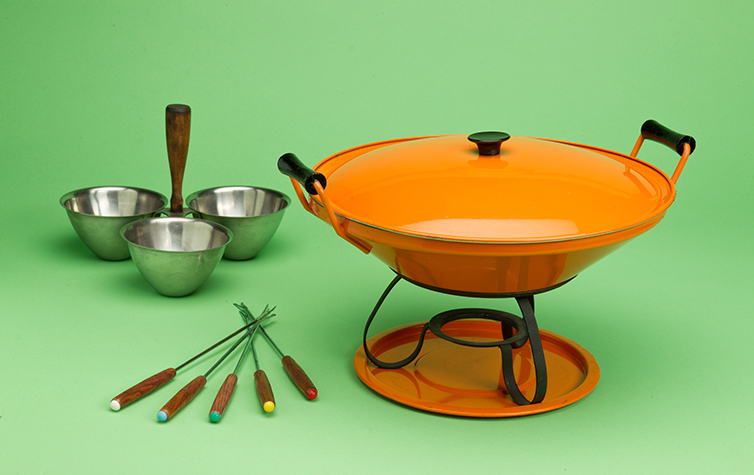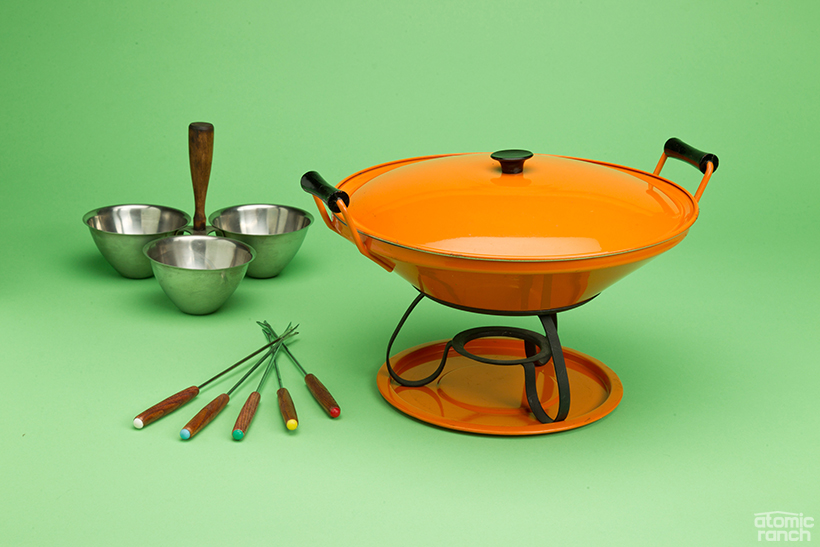
If you love midcentury kitchenalia and need a little push to start your own collection, Sue of yay retro! has provided all the help you need to fill your mid mod kitchen with authentic kitchen collectibles.
“I was lucky enough to have a very happy childhood with a Mum, Gran and Nan who all cooked and sewed, and I often look for items which make me think of their kitchens and the happy times I had,” says Sue. Her passion for retro pieces shows through the sheer number of vintage merchandise she offers and her knowledge of brands and companies. Though she doesn’t ship her treasures to the U.S., you can still learn a lot from her site.
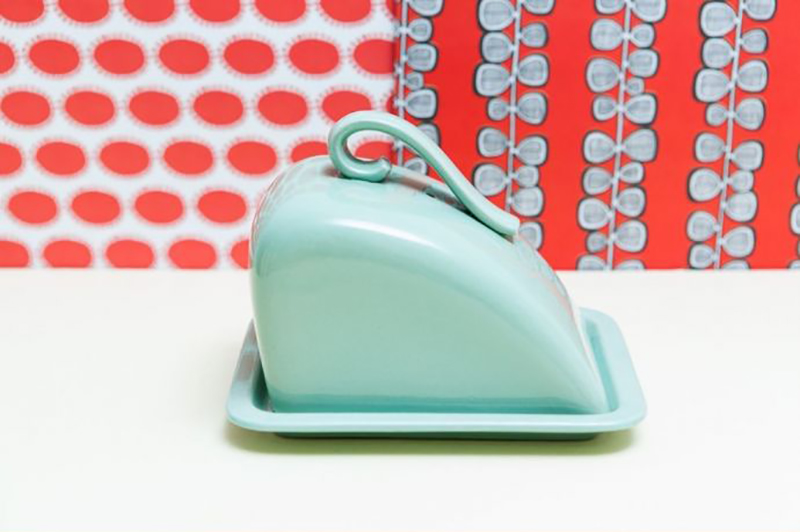
Popular Companies
Woods is a popular company that produces affordable, resilient kitchen collectibles. “[Woods tableware] was made in the 1940s to British war-time utility restrictions,” says Sue. “It is a range of Art Deco styled pastel-colored pottery which many families, schools, hospitals and government organizations across the U.K. used every day from the 1940s to ’80s. You will see it feature in many current British films which relate to the mid-century period.”
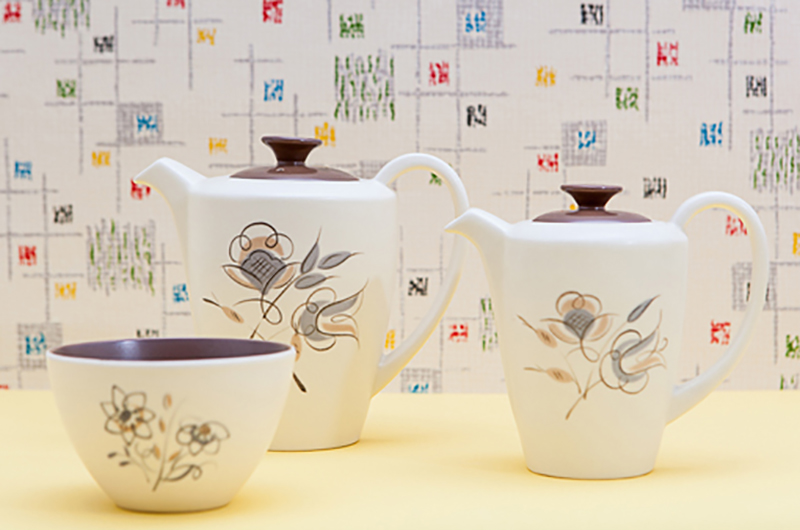
Some of the most sought-after pieces on yay retro! come from Hornsea tableware. “The Hornsea company was set up by Colin and Desmond Rawson in 1949 in their small terraced home,” says Sue. “The business began by making plaster of Paris knick-knacks to sell as souvenirs to tourists.” They later began to work with clay and create the animal salt and pepper shakers, preserve pots and mugs that collectors love today.
Poole Pottery is another of Sue’s favorite brands due to their unique designs. They started creating pottery in the 1920s, but it didn’t take off until years later. “You will find both plain and patterned Streamline shapes in Poole Pottery,” says Sue. “One of the most often found patterns is Trudiana. Other rarer patterns include the Falling Leaves, Summer Days, Red Pippin and the abstract pattern Ariadne.”
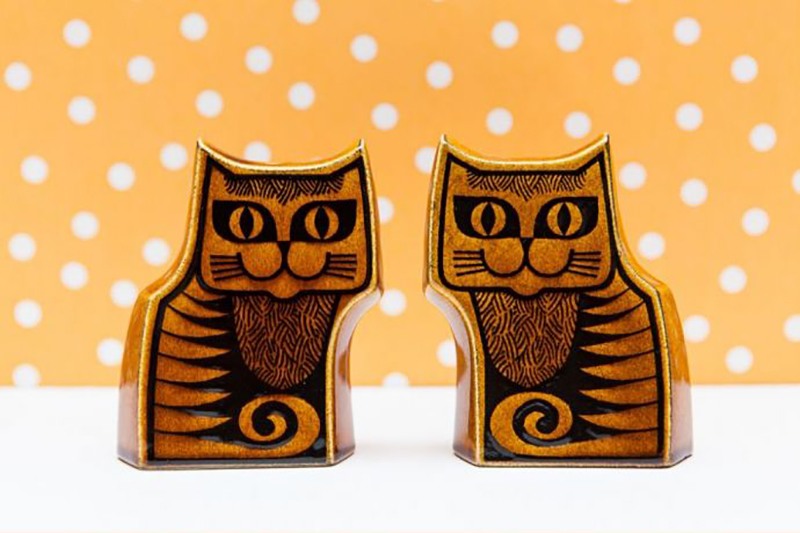
How to Identify Brands
When you’re looking through flea markets, it can be daunting to look for specific companies through the myriad styles, but midcentury items are distinctive in more ways than one. “Normally I can spot a vintage ornament or piece of vintage tableware by the look and feel of it,” says Sue. “Proper vintage wares are much finer and thinner and are made of better pottery than contemporary pieces.” If you’re still questioning the authenticity, brands usually have their makers mark on the bottom of the piece if the item is large enough.
When asked how to spot midcentury pieces as a whole, Sue responded, “I concentrate on 1960/’70s wares, so I would say flamboyant, joyful pieces full of color and positivity! Huge flowers and psychedelic patterns in orange, yellow, pinks and greens are key.”

Where to Find It
As with all vintage items, there isn’t any one place that is best to find these rare items. “I would recommend you look everywhere you go from online searches to charity shops, car boot and yard sales,” says Sue. “Even following like-minded vintage pages on Facebook and Instagram throws up some incredible finds.”
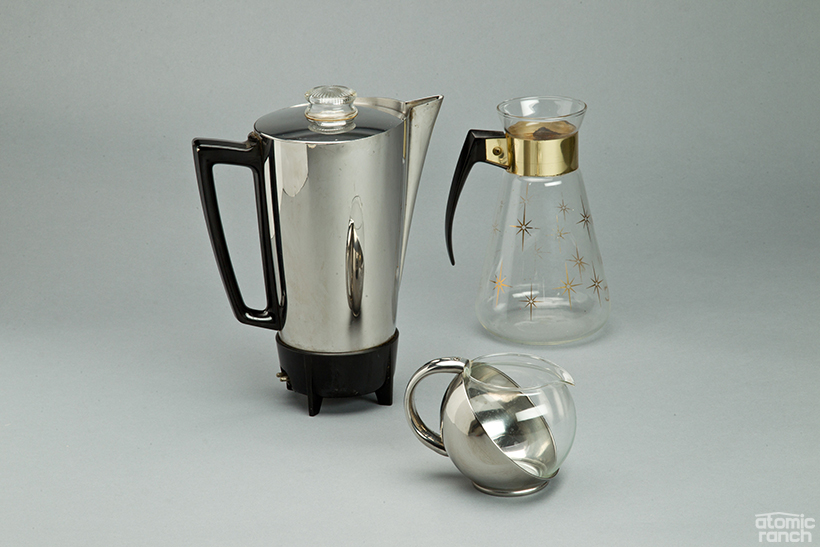
How to Assess Value
When you find a piece you love, assessing its value can vary, depending on the rarity of the piece. “Common damage would be chips and cracks which make pieces far less valuable,” says Sue. “Crazing or crackle in the glaze is not desirable, but in some vintage brands is pretty unavoidable and so becomes accepted and overlooked by collectors.” No matter the damage, it all comes down to what pieces you love and cherish. “The best way of valuing a piece is to ask yourself how much you love it. If you do, then I think it is priceless and worth having.”
For more on kitchen collectibles, visit yayretro.co.uk.

